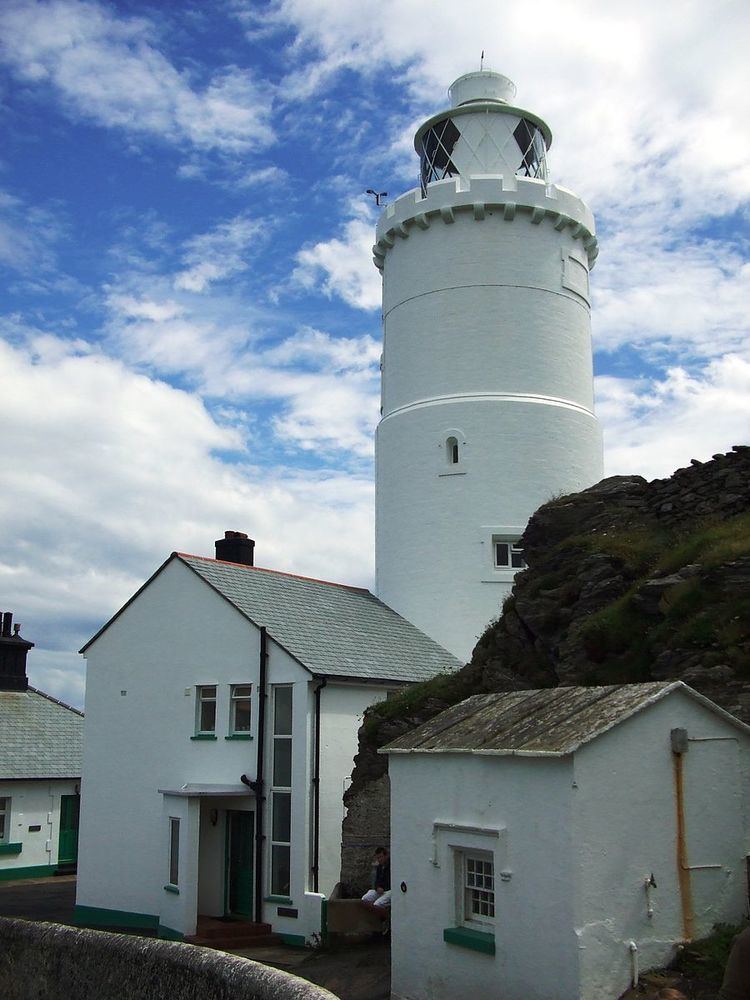Automated 1993 Height 28 m Opened 1836 | Intensity 815,000 candela Construction started 1832 Phone +44 1803 771802 | |
 | ||
Location Start PointDevonEngland Tower shape cylindrical tower with balcony and lantern Markings / pattern white tower and lantern Focal height white: 204 feet (62 m)red: 180 feet (55 m) Address South Devon Area Of Outstanding Natural Beauty (AONB), Start Bay Caravan Club Site, Dartmouth, Kingsbridge TQ7 2ET, UK Similar Start Bay, Overbeck's, Blackpool Sands - Dartmouth, Anvil Point Lighthouse, St Anthony's Lighthouse | ||
Start point lighthouse devon
Start Point lighthouse was built in 1836 to protect shipping off Start Point in south Devon, England. Open to the public in summer months, it is a grade II listed building owned and operated by Trinity House.
Contents
- Start point lighthouse devon
- Start point lighthouse
- Construction
- Changes since construction
- Optics
- Foghorn
- References
Start point lighthouse
Construction
Start Point is one of twenty nine towers designed by James Walker. The lighthouse is in the gothic style, topped by a crenellated parapet. The main tower is built of tarred and white-painted granite ashlar with a cast-iron lantern roofed in copper. The tall circular tower is 92 feet (28 m) high with a moulded plinth and pedestal stage and two diminishing stages above that. There are two entrances porches, on the north and south sides. The porch on the south side is blocked and has a 4-centred arch hood mould, whilst the doorway to the north porch has a Tudor arch. Both have raised parapets with Trinity House arms.
The inside of the tower includes a cantilevered granite staircase around the inside well of the tower with an iron balustrade completed by a cast-iron newel. The lighthouse originally had the keepers' living accommodation on the ground and first floors but this was removed in 1871 when new keepers' houses were built nearby. It has been designated by English Heritage as a grade II listed building.
Changes since construction
Since its construction, in 1836, the lighthouse has undergone many changes. In 1862, a fog-signalling bell was added but this was quickly replaced by a siren in 1877. In 1989, the erosion of the coast caused part of the lighthouse complex, including the fog signal, to collapse. A lot of the area had to be leveled as a result and retaining walls put in place. Other buildings which were used by the lighthouse keepers, who originally could only get on or off the lighthouse by boat, such as the well and piggery have survived.
Work began on the automation of Start Point Lighthouse in August 1992 and was carried out by LEC Marine at a cost of £82,754. It was completed in early 1993. The station is now monitored and controlled from the Trinity House Operations Control Centre at Harwich in Essex via a telemetry link.
Optics
The lens is developed from the dioptric system designed by Alan Stevenson, the first of this kind to be used by Trinity House. Two white lights were originally exhibited, one revolving and one fixed to mark the Skerries Bank. The fixed light was subsequently changed to a fixed red subsidiary light to mark this hazard. The light was powered by oil until 1959 when it was electrified. It uses a Fresnel lens.
Foghorn
The light alone was found to be inadequate in fog, and a bell was installed in the 1860s. The machinery was housed in a small building on the cliff face and operated by a weight which fell in a tube running down the sheer cliff. A siren replaced the bell after only fifteen years. When required the foghorn sounds once every 60 seconds.
